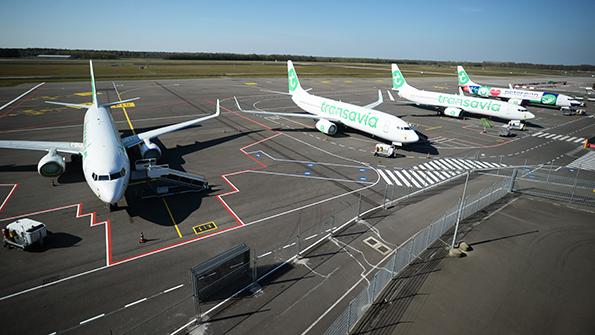
While accurately predicting what the MRO market will look like, even at the end of this year, is tricky due to the COVID-19 pandemic, these recent figures and facts could hint at what it will be.
Big mergers during these cash-crunch days are not happening: Boeing and Embraer, as well as Hexcel and Woodward, both called off their planned deals. However, the one-stop-shop concept isn’t going away, so MRO consolidation will continue.
The number of parked aircraft is probably at or near its peak. Aviation Week Network’s Fleet Discovery data shows nearly 16,000 aircraft are parked and about 3,500 are in parked/reserve status (flying 1-2 days during a 7-day period). Airbus A320s and Boeing 737s comprise 9,300 of that total, meaning that more CFM56s are parked than any other engine type by far.
A decrease in aircraft belly freight due to fewer flights is leading to new opportunities for cabin modifications as airlines temporarily carry freight in their cabins. Companies such as HAECO Cabin Solutions are designing products to place freight on or between seats, or removing seats to make room for a “palletized” unit on the floor.
Airline travel will most likely recover at a slow, gradual rate, rather than a V-shaped spike. That means not all of the aircraft and engines will return. As airlines and lessors determine whether their aircraft and engine assets are worth more remaining whole or as pieces, teardowns will increase. This will lead to more used serviceable material.
Until travel restrictions ease, however, the industry faces all sorts of logistics problems—from people to parts.
For instance, lessors’ scheduled returns are being held up because of travel restrictions and quarantines. They need to find local resources to perform maintenance, inspect the aircraft and sign the required documents. “This delay creates the risk that a long-stop date in the next lease with a follow-on operator is passed, and the follow-on lease is terminated,” says Bill Gibson, a partner at Vedder Price.
On the bright side, one thing that is helping airlines and aftermarket companies through this crisis is remote collaboration tools. During an Aviation Week webinar April 22 on MRO compliance, 67% of participants said they had looked into remote collaboration tools before the COVID-19 crisis and 19% said they had done so since.
These tools and others—such as what AAR is piloting (see MRO page 15)—will make the MRO industry more efficient.
Companies are understandably trying to preserve their cash, but in these times it is important to focus on your business fundamentals so your company will meet customer needs and expectations and be positioned for the future post-COVID-19—because the market will recover. It will look different and it might take a few years, but it will rebound.
Aviation and COVID-19
The aviation industry has faced its share of disruptive challenges, and each time it has emerged stronger. With that in mind, Aviation Week is expanding our COVID-19 coverage with content that not only helps in the short term with news and situational awareness but also skews to predictive and best-practices content that will help our industry make good decisions now—and for the better times ahead.
Updates Access coronavirus coverage from across the Aviation Week Network—including current news, a new weekly webinar series and expert forecasts and analysis of what’s next for our global industry: Aviationweek.com/coronavirus
